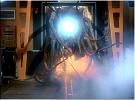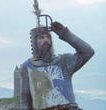LoBaron
Posts: 4776
Joined: 1/26/2003
From: Vienna, Austria
Status: offline

|
quote:
ORIGINAL: Alfred
LoBaron,
Nice idea but I don't think it will fly. Two basic reasons for my view.
1. Too easy to be circumvented.
2. Too subjective a decision.
Elaborating a bit on the above.
1. Circumvention
You have specified the Kokoda Track. Obviously the principle could be applied elsewhere (see comments next section). I will therefore limit myself to the specifics of the Kokoda Track here.
Firstly, the shortest distance between Buna and Port Moresby is two hexes. An army marching between the two bases can either travel via hex 98,129 or 99,130. There is no qualitative difference between the "northern" and "southern" routes. If only one of those hexes is modified as you suggest (assuming it is possible which I greatly doubt by the way), the marching army merely uses the alternative route. Hence you would need to modify both hexes.
Secondly, even with both direct route hexes so modified, nothing would stop an army marching out of Buna to still go around the created obstacle by taking the slightly longer route via hex 99,128. In terms of cost imposed on supply delivery and troop fatigue would still be far less than the benefits of marching a 140k army.
Thirdly, you assume that with your modification, the army would march out of Buna. It could just as easily set off from Terapo or Salamua. The additional hex travelled would not impose much of a handicap and would even be shorter than the possible alternative route out of Buna via hex 99,128.
Fourthly, the invading army could be dropped off at a non base hex and then march overland directly to its destination, thereby also bypassing your modified terrain.
Doubtless there would be other means to circumvent your scheme. For every proposal there is always a counter proposal.
2. Subjectivity
As seen from the preceding section, it is quite easy to circumvent your proposal. The obvious counter counter is to surround all of Port Moresby with your modified hexes. That however would be a very subjective decision. Why so treat Port Moresby and not elsewhere. The problem is not just applicable to the jungle of New Guinea. To nominate just a few other locations, tt also applies to the desert and oil producing regions of China, the India-Burma border, marching from Broome to Katherine/Darwin to Alice Springs. To be consistent we would end up with a honeycomb of so much modified terrain that there would scarcely be a hex left on the map without a "base" of some sort. I for one, would then immediately think that the entire AE terrain movement/supply/fortification (yes fortification too because even though no airfield or port could be built why would one not be able to build up forts) concept would be meaningless.
Then you would also have the rants from the usual crowd complaining that the devs are on purpose encouraging players to play unhistorically. Witness the recent thread on this sub-forum from el cid complaing that players are not being penalised by not using the Kokoda Track.
Summary
Sorry LoBaron, your suggestion is one which fundamentally aims to assist poor players. As such, as always it will ultimately fail as the better players will find a way around it. The only proper way of avoiding the perceived problem is to remove the ability of an opponent to march 140k over the Owen Stanleys.
Firstly, don't lose both China and India thereby dramatically increasing both the industrial capacity to fully equip such an expeditionary force. Don't forget the expeditionary force is backed up by overwhelming air and sea forces (again fully equipped by the industrial base), which if not present, the defender could ship in the necessary assets to hold Port Moresby and interdict the enemy before it left Port Moresby plus interdict the logistical chain linking Buna back to the depots.
Secondly, have enough pressure points elsewhere so that the additional resources made available after the loss of both China and India, can not be safely concentrated on a single point.
Alfred
Alfred, your criticism is aprechiated.
I am not a modder, my limited time available for the game is reserved for actually playing.
The original intent of the idea was to complicate ahistorical gameplay in a specific area of the game, southern New Guinea:
Crossing the OS mountains in much less than a month with 7 divisions and heavy equipment - I should have known that guys like LST already tried something similar as the issue in this area
is so obvious.
Every other area may have to be treated different and there the points you make may, or may not, apply. I havent thought through a similar modifcation of Burma, China or the DEIs,
but believe that a simple solution for a local issue of noticable impact must not be perfect to improve - or needs to be a fix everything button for all tricky spots on the map.
My interest does not lie in assisting poor(?) players (at least in this case), rather I´d like to contribute to bringing the game closer to historical situations where applicable, where the
ammount of work required to reach that goal is low in proportion to the potential benefit, and where the impact on other game aspects is neglectable.
But I guess my motivation is not of much interest here anyway.
Let me adress your post in a bit more detail:
Circumvention:
Concerning your first, second and third point: Nik already mentioned it, a single hex might not achive the desired goal, so you a few add more.
I do not see much of a problem with this. At max I see 4 locations where the implementation would make sense: The two river hexes north of
Terago/Wau and the two hexes between PM and Buna. Its not like such a concentration of base hexes is unique on the map, the situation asking
for a solution because of the extremely short supply/movement paths might be though.
The intention is not to cover the whole map with dot bases (although, funny, I had this idea quite some
time ago though dismissed it as impractical with the way bases are implemented).
The relevant quesiton is whether the benefits outweight the drawbacks locally. Thats not up to me to decide.
The fourth point, well, it has been a very long time since I have seen a PBEM without the most basic HRs in WitP: no landings at non base hexes. 
Subjectivity:
Surounding PM, or even to single it out is not neccesary, the coastline is not of interest but the Owen Stanleys. This topic and the one about other areas on the
map is covered above already. New Guinea is quite unique on the map, both in its geographical layout and in the short supply/movement paths working against the
conventional game mechanisms.
Since the primary goal is to make movement costly, and to limit the ammount of troops able to pass without a significant investement of supplies, this
also at least limits the argument against fort building ability. What speaks against this? It slows the op tempo further - but only to a small extent as keeping garrison
troops in the mountains would require supplies in ammounts comparable to small islands when overstacked.
This further increases realism in simulating the logistical nightmares faced on the ridge.
To sum things up:
Circumvention could easily be prevented by careful placement of the dot bases and the implementation of standard HR #1.
Subjectivity is obvious, the area concerned is subjectively chosen. But the result would be an objectively measurable convergence
to the historical situation in an important strategic area of the war that decides control over the northern passage along the Australian coast to
the DEIs, and represents the door to Rabaul, the Admiralties and Northeastern New Guinea.
I don´t think that it is the perfect solution for every map issue we got. But maybe interesting enough to try it out.
_____________________________
|
 Printable Version
Printable Version
















 ) I think AE is an excellent game. But then I view it as it is, foremost a game. Players of AE are not being asked to refight the Pacific War exactly as it occurred between 1941 and 1945, but they are tasked with handling a conflict between team Red (the Japanese Empire) and team Green (the USA and its allies) using the tools available to the historical protagonists. This includes having to employ those assets within the framework constraints of that era, both technological and political, which impacted upon the scale and feasibility of operations available to the real historical protagonists. Even then just to make the game playable at all there is considerable abstraction in the game engine, and as an inevitable outcome there will always be unhistorical situations. This will be particularly apparent in games between players of widely different skill levels/play philosophies.
) I think AE is an excellent game. But then I view it as it is, foremost a game. Players of AE are not being asked to refight the Pacific War exactly as it occurred between 1941 and 1945, but they are tasked with handling a conflict between team Red (the Japanese Empire) and team Green (the USA and its allies) using the tools available to the historical protagonists. This includes having to employ those assets within the framework constraints of that era, both technological and political, which impacted upon the scale and feasibility of operations available to the real historical protagonists. Even then just to make the game playable at all there is considerable abstraction in the game engine, and as an inevitable outcome there will always be unhistorical situations. This will be particularly apparent in games between players of widely different skill levels/play philosophies. 



 New Messages
New Messages No New Messages
No New Messages Hot Topic w/ New Messages
Hot Topic w/ New Messages Hot Topic w/o New Messages
Hot Topic w/o New Messages Locked w/ New Messages
Locked w/ New Messages Locked w/o New Messages
Locked w/o New Messages Post New Thread
Post New Thread